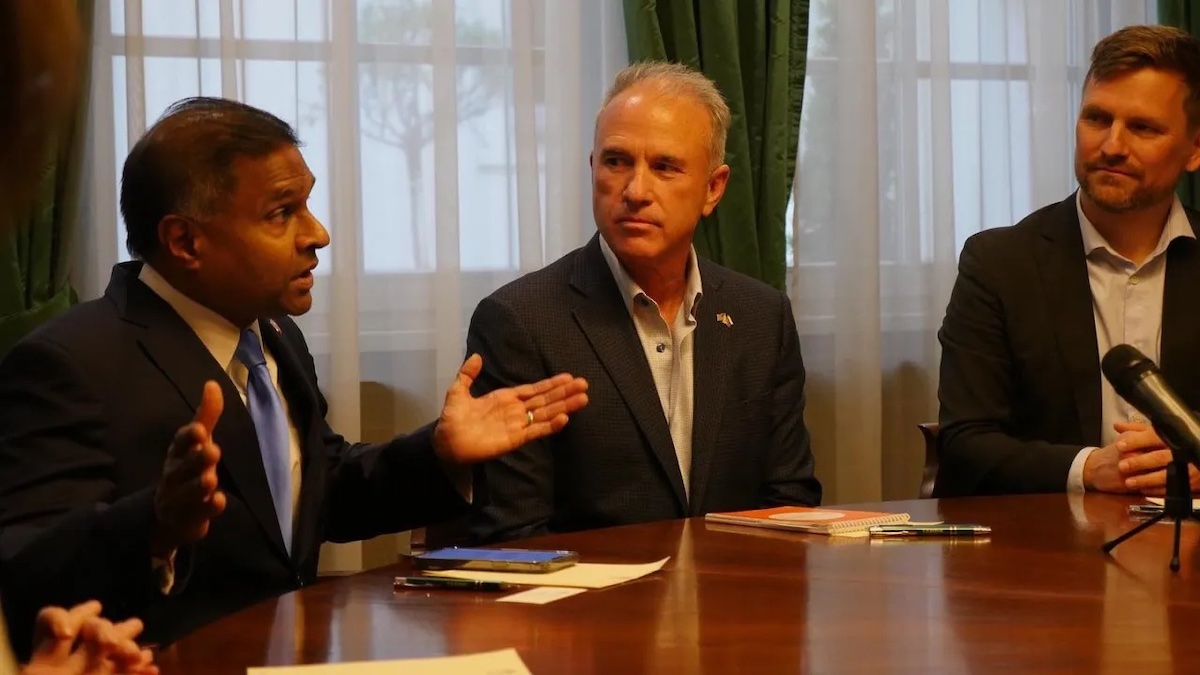Direct Relief, a humanitarian charity operating out of Santa Barbara, has been particularly busy this month, announcing that its recent initiatives include granting $7.9 million in cash aid to help Ukrainians who’ve suffered injuries or trauma in the war access medical care and rehabilitation services. December’s grant, which has been the broadest issuing of support to Ukrainian groups from the organization so far, brings Direct Relief’s total cash assistance for programs benefiting Ukrainians and Ukrainian refugees up to a considerable $29.4 million.
It is possible that when Santa Barbara Rep. Salud Carbajal visited Ukraine earlier this month, his trip may have overlapped with that of Direct Relief’s CEO Thomas Tighe, who was in Ukraine and Slovakia to announce the grants alongside the mayor of Lviv, the U.S. Ambassador to Slovakia, and leadership from the ministries of health and local organizations in both countries.
“The Ukrainian people need all the help that can be mustered,” Tighe said in a recent press release, finding an echo in Carbajal’s own thoughts toward the subject. “This unprecedented private humanitarian health assistance from Direct Relief reflects the generosity and participation of people and businesses worldwide seeking simply to stand with and assist the people of Ukraine. It was a privilege to convey that message….”
Ukraine was the largest recipient country of Direct Relief’s assistance in 2022, according to Vice President of Communications Tony Morain, with the country receiving 1,099 tons of medicine and medical supplies, valued at $640 million, from the medical aid group. The supplies — provided at the request of the Ukrainian Ministry of Health and other health-care providers after Russia invaded the country in February — includes treatments for traumatic injuries and “a broad range of medications ranging from cancer therapies, insulin, and antidotes for chemical attacks to those needed for chronic health conditions.”
“At the beginning of the year, we certainly didn’t expect that Ukraine would become the largest recipient of Direct Relief support,” Morain said. “But that’s how it emerged, due to the invasion … the need has just been astronomical. While the priority has been on the military side of the equation, the health system is struggling to get the resources it needs.”
Sign up for Indy Today to receive fresh news from Independent.com, in your inbox, every morning.
Morain explained that when Tighe and some of his colleagues were in Ukraine to announce the grants, they toured a location of one of the grant recipients, a tertiary hospital in Lviv.
“The week prior, they did a number of organ transplants, they deliver babies, they do everything that any major hospital would do,” he said. “But on top of that, they’re also dealing with amputees and people with traumatic brain injuries from fighting … the need is kind of hard to express, but Direct Relief is doing everything it can to help.”
This year, Forbes Magazine ranked the organization as the fifth largest charity in the United States, by private donations, and the largest of the five California charities included in the ranking. In addition to the aid provided to Ukrainian groups, this month the group awarded $22.7 million to 71 U.S. health-care and other nonprofit organizations working to address health equity, which was largely a result of MacKenzie Scott’s $50 million donation toward Direct Relief’s Fund for Health Equity last year.
Overall, in Direct Relief’s fiscal year 2022, the charity provided more than $2 billion in medical aid and $58.2 million in financial assistance to health-care providers and other local organizations in 98 countries and 52 U.S. states and territories.
“In the past, the United States has been the country that Direct Relief has supported the most in the given year; this year has been Ukraine,” Morain said. “But we’re still working in over 90 countries, including the United States … when a disaster happens, it often gets some initial coverage. But the effect it has on a community, in the lives of people there, can last generations, and we’re gonna keep providing support for as long as it’s needed in a number of these situations.”
Next year, Direct Relief will be celebrating its 75th birthday in the Santa Barbara community. Morain said the organization’s “doors are open” and residents are “welcome to come by, get in touch.”
“Direct Relief only exists because we’re in Santa Barbara,” Morain said. “The generosity of the community over the past 75 years that we’ve been here has been exceptional. Direct Relief moved into a new headquarters, that’s 155,000 square feet, across from the airport, and it was only possible thanks to the City of Santa Barbara that it allowed us to expand here. And since that happened, we’ve more than doubled in size. So the support of Santa Barbara is really what has led Direct Relief to grow and support more people in more places than ever before.”

Support the Santa Barbara Independent through a long-term or a single contribution.





You must be logged in to post a comment.